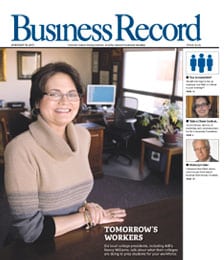For inflation protection, half measures won’t work

.floatimg-left-hort { float:left; } .floatimg-left-caption-hort { float:left; margin-bottom:10px; width:300px; margin-right:10px; clear:left;} .floatimg-left-vert { float:left; margin-top:10px; margin-right:15px; width:200px;} .floatimg-left-caption-vert { float:left; margin-right:10px; margin-bottom:10px; font-size: 12px; width:200px;} .floatimg-right-hort { float:right; margin-top:10px; margin-left:10px; margin-bottom:10px; width: 300px;} .floatimg-right-caption-hort { float:left; margin-right:10px; margin-bottom:10px; width: 300px; font-size: 12px; } .floatimg-right-vert { float:right; margin-top:10px; margin-left:10px; margin-bottom:10px; width: 200px;} .floatimg-right-caption-vert { float:left; margin-right:10px; margin-bottom:10px; width: 200px; font-size: 12px; } .floatimgright-sidebar { float:right; margin-top:10px; margin-left:10px; margin-bottom:10px; width: 200px; border-top-style: double; border-top-color: black; border-bottom-style: double; border-bottom-color: black;} .floatimgright-sidebar p { line-height: 115%; text-indent: 10px; } .floatimgright-sidebar h4 { font-variant:small-caps; } .pullquote { float:right; margin-top:10px; margin-left:10px; margin-bottom:10px; width: 150px; background: url(http://www.dmbusinessdaily.com/DAILY/editorial/extras/closequote.gif) no-repeat bottom right !important ; line-height: 150%; font-size: 125%; border-top: 1px solid; border-bottom: 1px solid;} .floatvidleft { float:left; margin-bottom:10px; width:325px; margin-right:10px; clear:left;} .floatvidright { float:right; margin-bottom:10px; width:325px; margin-right:10px; clear:left;}
Dear Mr. Berko:
I want to buy $20,000 worth of Treasury Inflation Protected Securities (TIPS). But when I called my broker, he wanted to sell me a mutual fund that owns TIPS. I want to avoid paying a 5 percent commission and annual management costs of 0.75 percent, both of which would reduce my yield. I just want the plain TIPS and not shares of a fund that manages them. He tried to talk me out of TIPS because he insists we are not going to have an inflation problem. He said we are going to have deflation, and he made a good case for lower prices and deflation, so now I’m confused. He says “deflation” and you say “inflation.” Please tell me who’s right.
P.D., San Antonio
Dear P.D.:
So far, your broker is 50 percent correct. The Consumer Price Index has actually fallen 0.4 percent in the past 12 months. Aiding and abetting that decline was a large drop in the price of oil, a continuing collapse in the housing market and a decline in the cost of clothing and transportation. A strong drop in personal income further supports the deflationary trend. A recent survey by the outplacement firm Challenger Gray & Christmas found that 27 percent of the employers they contacted reported wage cuts or salary freezes.
Deflation, or falling prices, concerns the government more than inflation because consumers delay their purchases in the belief that prices will continue to fall. And that can drive companies out of business.
A true inflationary spiral involves unemployment between 3 percent and 4 percent and rising salaries, neither of which is happening today. That is why your broker is 50 percent right. But it’s dangerous to ascribe short-term events to long-term consequences.
Though inflation is not currently a problem, our massive federal and state debts scare the bejabbers out of me. Today, the U.S. government has $11.7 trillion in outstanding debt, up from $5.2 trillion in 2000. We also must include the government’s efforts to jump-start the banking system, which is likely to add another $1.5 trillion to that $11.7 trillion figure. The Obama administration is literally and figuratively flooding the economy with cash.
Basically, inflation is defined as too much money chasing too few goods and services. The big concern among most analysts is that Congress, rather than pay off the debt and reduce the deficit with incoming taxes and receipts, will authorize the Treasury Department to print even more money. In this scenario, the dollar’s value crashes like a coconut from a palm tree.
Because printing money is the convenient solution used in the past, there’s little doubt Congress will again deluge the economy with caskets of cash. It’s a quick-fix Band-Aid that borrows the economy out of trouble. But the payback will be double-digit inflation.
Today, inflation isn’t a big problem. But you and I both know that in 2010 or 2011, inflation will soar. Prices will rise again, falling home prices will begin to stabilize, and employment will increase. So I’d rather own TIPS when they’re not in hot demand or potentially trading at a premium. A year or two from now when this recession is over and you hear consumers complain about double-digit inflation, your TIPS will make you proud. Meanwhile, you can purchase TIPS directly from the U.S. government. Go to www.treasurydirect.gov and follow the bouncing ball.
Please address your financial questions to Malcolm Berko, P.O. Box 1416, Boca Raton, Fla. 33429 or e-mail him at malber@adelphia.net. © Copley News Service







